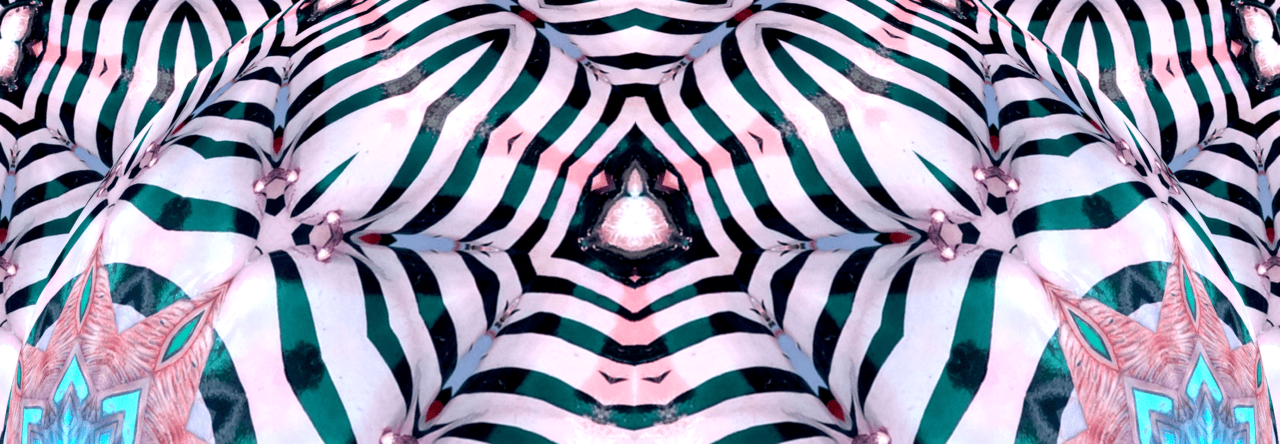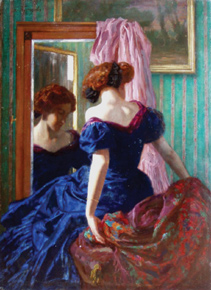As author Paolo Coelho writes, “If you’re afraid — don’t do it; if you decide to do it — don’t be afraid.” It’s great advice for anything, but especially applicable to mirror meditation. Mirrors get a bum rap, made notorious in horror films and touted as tools for narcissism or platforms for self-hatred. It’s unfortunate, because I have found mirror work to be a most powerful form of communion.
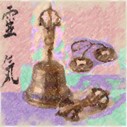
Teacher Sadhguru shares the importance of sound, language, and speaking with intent:
“Whatever sound you need to utter, utter it in such a way that it is beneficial for you. And whatever is beneficial for you will naturally be beneficial for everyone around you. If a sound is doing wonderful things to you, it will definitely do the same things to everyone around you.”
“The Sanskrit language was consciously created so that just uttering the language will purify the system. But now, most of the time we speak languages which are no longer made like that, so it is best to handle it with intention…”
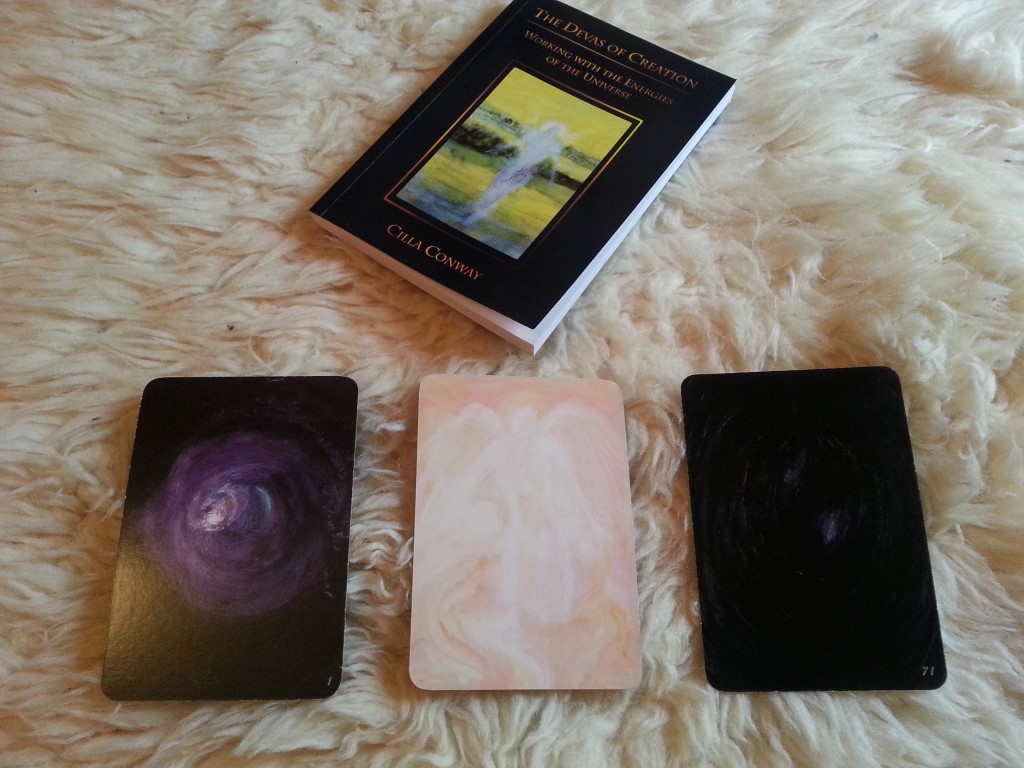
Last night, I decided to ask my Devas of Creation deck for some insight that might be helpful around the recent inauguration of Donald Trump. I asked three questions, shuffled the deck, and drew three cards. Here’s what resulted:

1st Question
Why is this playing out?
Card drawn: First Light
The First Light card is emergence and the dawning of new worlds. It is a revolution in thought because it helps open our eyes to what is possible; it is the flowering of awareness. Without the opening of first light, there would be no doorway into change, no new vistas to which we can aspire. Trump is certainly a call to what is possible because he has greatly disturbed well-entrenched energies in our government. He has drained the swamp, and now everything in the swamp is swimming around in plain sight. The veils have been lifted. So much is unsettled and many are in fear. But instead of fear, we can choose to see great opportunity. Sometimes it is only with a rude awakening and a crack on the stubborn head that one rises to new challenges.
2nd Question
What will the outcome be in four years time?
Card drawn: Eros
Eros is the Divine Masculine. Do you find it ironic that this card would appear in a reading about Trump? Realize that Trump is showing us contrast here. He is showing us exactly what needs to be healed in the masculine. This card is a reminder to reconnect inside with our inner divine masculine and source of strength. We are light bearers in whatever occupies our time. If we can harness a higher will within ourselves, overcoming our smallness and the fears that hold us back, we can not only manifest and become with more ease, but we will touch more lives as well. What is most important here is to be a representative of Ultimate Truth, to transcend the level of opinion, half-truths, propaganda, etc. If we can abide by the message of Eros, a world-changing healing of the masculine can take place during this presidency. Men and women can take their places as protectors and providers–of each other, our earth, and for our children.
3rd Question
What are the lessons we need to learn in that time?
Card drawn: Seed Void
The Seed Void is an “artery into a different reality”. It is deep space and mystery, what the Toltec would call “nagual”. Think of it as a well or birth canal connecting one dimension to another. It is the unseen aspects and new forces of nature that come into play. Fasten your seat belts, because this energy helps us to question our fear as well as our certainties about right and wrong, about “the other” and about ourselves. With courage, we can dismantle our false sense of self, an evolutionary necessity, and be born into a new level of trust. Indeed, this is a time to turn inward, to take back our projections, and to deal with our own shadow aspects. Those unwilling or unprepared to do the work will have an extremely hard time of it, and their resistance will cause trouble not only for themselves but for others. But if we open up and do the work, we may just find ourselves transported into a world that bears little to no resemblance to the one these others claim to live in. The opportunity to be free of the collective dream is there for those who dare to dream something new.
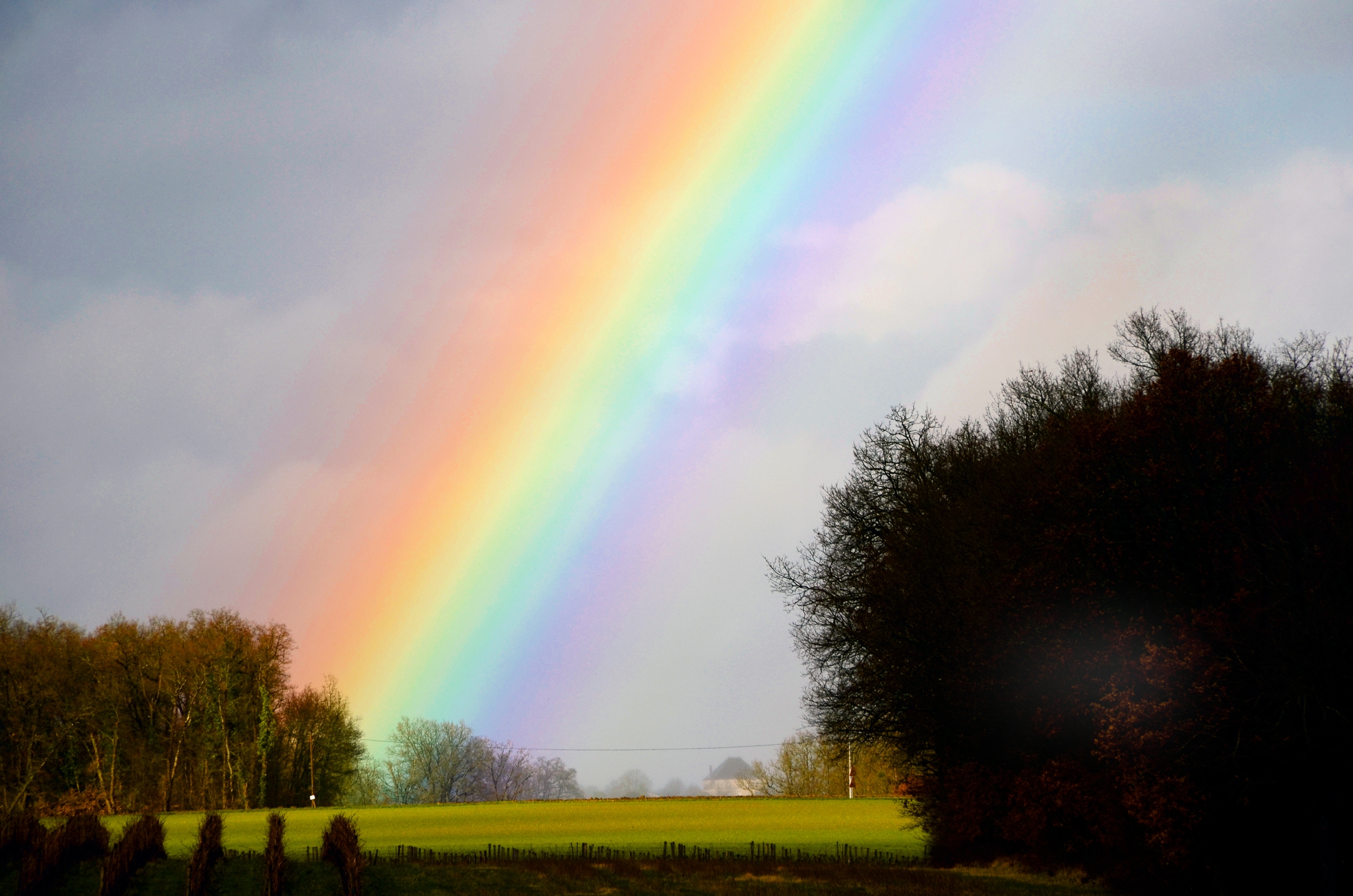
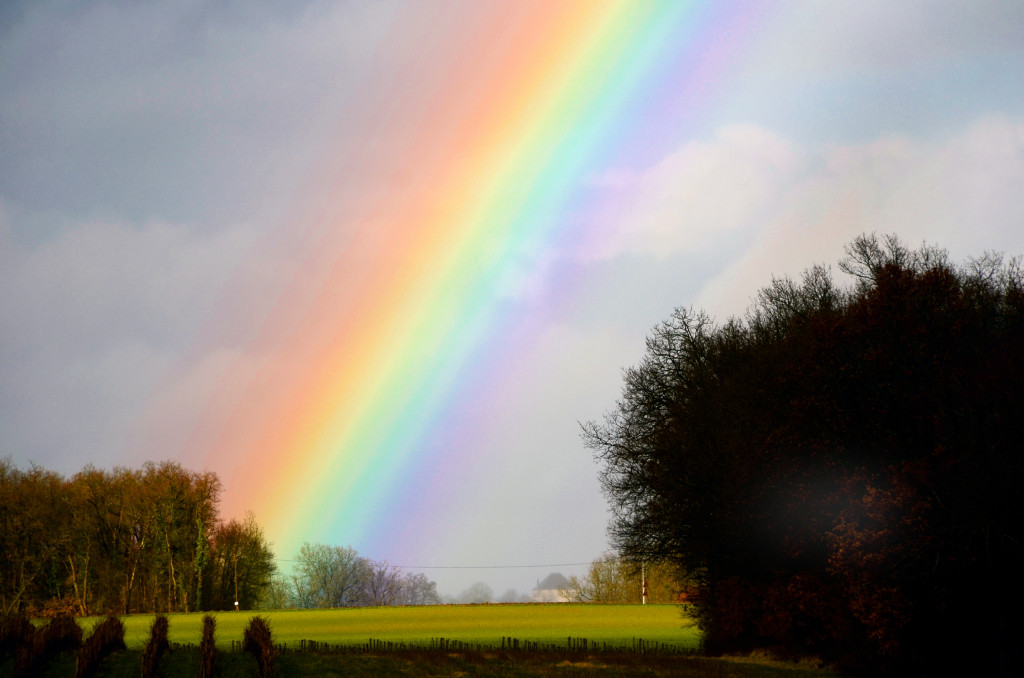
Here I offer short and sweet soundbites that I’ve gleaned on my path, learned from clients, or picked up from others along my journey. May they serve as inspiration on your healing path…
4/16/17
So you want to know how to spot fake news and/or concepts? Here’s the primer.
1) Ask yourself, do I believe or want to believe or not want to believe this because of some unexamined or deep-seated, possibly even generational fear? If the answer is yes, do not go to step two. Do your work here because you cannot see clearly. Period. Even if you answer is no, do not go to step two. Your task is to develop enough personal power to begin discerning fact from fiction. Simply put, we don’t know what we don’t know and there is grave danger in that because herein lie the blindspots. In fact, you might even be reading this thinking, “What fears? I don’t have any fears” or “I’ve dealt with all my fears, thank you very much.” This doesn’t mean you have to let others tell you what to think, though. It means you’ll need to be comfortable in the recognition that you don’t know…which applies at every step anyway. When you can admit that you don’t know, proceed to step two.
2) Are you believing or wanting to believe or not something for purely or mostly egoic reasons such as wanting validation for your beliefs, wanting to be right, wanting to feel superior, etc? If there’s any of that energy operating, don’t go to step 3. Instead develop a meditation practice of some sort or other that allows you to recognize that part of you which never changes. Once you’ve gotten in touch with the silence and have built the muscle required to drop your certainties and thoughts that you “know”, you may progress to the next step.
3) Made it here? Congratulations because it is all about to get a lot easier assuming you’ve actually done the work of step 1 and 2. Now then, observe your body. Does the news in question “ring” with truth or not? If it pings, it is true enough. If not, it isn’t true or true enough…not yet and maybe not ever. Withhold any certainty until more information or contrary information is revealed. Trust that when you do hear the truth you will know the truth because the truth is who you are.
4) Practice. Practice. Practice.
This came to me last night after being asked the question how to tell anymore the difference between real and fake news. And let’s face it…so many of the experts trying to help us sort this out ARE fake news. So, it is the crisis of our day, to be sure. It was only after receiving these three steps that I realized they mirror the Toltec masteries of Awareness, Transformation, and Intent. The spiritual warriors who mastered their intent became “seers” or clear mirrors. This world is in dire need of more seers. We all need to do our part to become one.
3/3/17
Humans tend to complicate things. We like juicy stories with plot twists and long…and even better, neverending, lists of things to accomplish. We like creating sophisticated systems and putting our very large, unique John Hancock on things. But what is most important is so so simple and so very unpersonalizable. Every day, I am astounded at how much more simple it is to live and love, and how all the things I thought were important to me and my sense of self seem to just melt away in that ocean of simplicity. All the complication is just a pillar of salt floating in an ocean. It isn’t going to last long anyway so might as well get used to the idea of dissolving.
2/20/17
The fact is, anything that has your full faith has the potential to cure you. That’s the power of belief. There’s absolutely no harm (though many would argue otherwise) in placing your faith in any story you choose. We all do it…all the time!!! Ironically, many argue that one story has more validity than another…more scientific evidence, more historical basis, more whatever. The only thing a more widely held belief has is a stronger collective faith behind it. When you reclaim the power of your faith, you can place it in the most beautiful story YOU choose and say to hell with every naysayer. Am I condoning pie-in-the-sky alternative fact drivel? Hardly. The thing is, what is true doesn’t need anyone to believe it, and I’m not advocating the reinforcing of a denial system. But I am, however, recommending the cultivation of a delight in the fantastical realm of possibility.
2/1/17
Dielle’s Healing Wizbit: Did you know that 98% of our brain doesn’t even use language. That’s right. Language only uses 2% of our brain matter. But almost all of our time is spent stimulating this 2%…over and over, again and again. BORING!!! No wonder we keep repeating history and making the same mistakes.Wanna break out into the other 98%? Ah, now for that, you’re going to have to take some chances, face some fears, make some mistakes, and be willing to look a little crazy to everyone else. Up for it?
1/31/17
Have you all seen the movie Pleasantville? My thoughts today reminded me of that movie. I was considering how my recent habit of calling things “pasty-white” is so descriptive but misunderstood. People think I am referring to race or something. But what I’m truly referring to is a narrow and fixated state of mind upheld by fear and ignorance. The “pasty-white” minds are like the black and white people in Pleasantville; they are too easily misled and defend their limitations to the death, imposing those same limits on everyone else. I much prefer “people of color”. And again, here I can be misunderstood to be referring to a person’s race. But I don’t really care one jot what color someone’s skin is. The people of color to whom I am referring are the one’s whose hearts have been opened by the fires of their Truth and inner power, who know how to create beautiful things that celebrate and help not just themselves but all creation, and who aren’t afraid to radiate with all the colors of the rainbow, even in a room full of pasty-white mentalities. They are the people who were sent here to help you radiate with all that color too. But you have to let go of your shame, guilt, fear and resistance!!! You are rainbows, my dears! Not pasty-white shadows.
1/26/17
We can walk a very similar path to others, so much so that we fail to remember that the exact same situation can hold two very different lessons for two different people. One person may need to learn to leave, the other stay. One may need to learn to step up, the other step down. One may need to learn to open and the other set boundaries. It doesn’t mean we are getting it wrong…or that they are!!All this to say, sometimes advice is best left upspoken. We are most helpful when we give space to the other to come to his or her own realizations and are not projecting ours. And we help ourselves when we don’t compare our path to another’s.
1/25/17
I recently saw a post about the late BobRoss, public television’s famous art teacher. Someone told him they couldn’t paint because of colorblindness, so Bob painted a beautiful picture in black and white. It’s no different with voice. Someone might decide he can’t sing because he’s tone deaf. But there are people who sing in black and white and others who sing in color. The point is, everyone has a voice with which to create things of beauty and healing. Know your limitations but never exaggerate them.
1/22/17
There will be those in your life…family, friends, complete strangers…who just like to start something. Out of boredom, fear or suffering, they will strike out at you and offer you their poison. There are different stages to dealing with such challenges. At first, of course, we are prone to be sucked in, giving them exactly what they want…our energy. First, we must learn to set boundaries, especially with those we love. Sometimes, we have to spend less time with someone. We often have to learn how NOT to respond. After some time, we must learn to witness and take responsibility for our reactions in our interactions. As we watch ourselves, we learn to deflect the poison arrows that come at us. And when one lands, we clean up within ourselves the places that resonated and allowed us to become entangled. At some point, we may even be able to accept the poison out of love in a tantric act to alleviate the fear or suffering of other. That, of course, is pretty high level stuff. Aim high.
1/17/17
Is is true that most of us already know enough to be free. We simply don’t apply what we’ve learned. So we reach for the next book, the next guru, the next self-improvement workshop. We feed on intellectual stimulation and fail to integrate those ideas into action. How do we start to integrate what we’ve learned? Often by letting it all go. Be willing to empty out all that knowledge and let it be replaced with knowing.
1/15/17
Anything we bury or swallow, the things that would otherwise arise spontaneously in us, will eventually turn toxic to the body if we refuse to deal with them. What we press (be it through repression, oppression, depression…) becomes compacted and stagnant, making it harder and harder the next time to go with the flow. It becomes a lifelong game of chicken. How long can one avoid one’s truth in order to feel safe before disease strikes? The path to healing requires us to become warriors of our truest expression. No one said it was easy. It does however have an incredible payoff called liberation.
1/13/17
Today, I introduced sound healing meditation to a small group of yoga students. A few were familiar with what I offered. The others were not. The ones who were more familiar were able to really let go into it and later talk about what they felt describing the subtle sensations they had experienced. The ones for whom it was a new experience had more difficulty talking about it afterwards. Energy is like that. I remember the first time I was exposed to a gong bath. I didn’t know what to expect. I left that room feeling completely altered, but I had no idea what just happened. That night, I kept hearing the gong in my head all night long. Was it good? Was it neutral? Was it detrimental? It was the weirdest experience of my life at the time. Now, I’m used to the powers of sound to shift states and energy. All this to say, when it comes to energyhealing, we don’t always (and often can’t) understand or rationalize what we are experiencing. Fortunately for us, we don’t have to. The healing happens anyway. I can’t tell you the number of times people think nothing significant happened, until a week or so later, when they realize they no longer feel a certain ache or are no longer reacting to life in habitually ingrained ways, doing things they previously were afraid to do without a second thought.
1/11/17
I was working with a client yesterday, and we talked about how the body, loyal servant that it is, takes on our unprocessed emotions. While the body is certainly capable of helping us process emotion, through movement such as dance for example, it is not meant to be the warehouse of them!! If dis-ease is manifesting in the body, signaled by discomfort or even pain, it is a clear signal that the body is being asked to do more than its fair share. Time for us to own whatever it is we’ve been resisting and let the body know it isn’t responsible for storing and stuffing what we haven’t wanted to feel. Healing is a path of owning up!

 What’s the difference between a resume, a bio, and an artist statement?
What’s the difference between a resume, a bio, and an artist statement?
Basically, your resume is a skeletal look at your training, background, education, accomplishments, etc. Reading a resume is like reading a phone book–boring! It serves a purpose, though–a very specific purpose…to get you that position or job. You want to include everything pertinent.
The bio, on the other hand, is a concise and well-constructed summary of things like education, influences, background, techniques, and overall message or artistic viewpoint, but it should be captivating and infused with your personality. This can also include where you are from, credentials, significant recognition… It’s the most basic facts about you as an artist. Include what you most want people to know.
It should be written in a flowing paragraph and be infused with your personality. A bio isn’t meant to explain your entire background and all the details. It’s impossible to do that in so few words and most bios run about 200 words or so. Instead, it should paint a picture. You get to choose how you say everything and/or whether to leave something out entirely.
The statement is a one page overview of your message as an artist, why you create what you do, your methods, your techniques, your influences, your inspiration. That sort of thing. It’s your story and your message. You have to read what you wrote and feel “Yes! That’s who I want to be!” with your statement. The clearer you can be with that message, the more likely people will want to engage because they sense and resonate with its integrity. The statement is your chance to really share your message with the world and explain who you are as an artist and what it is you want your art to say.
I don’t even know where to begin. Where do I start?
A great place to start is with some questions to help prime the pump of your creativity. What is your message? What makes you different? What are your achievements? I also highly recommend visiting other artist sites and having a read through their bios and statements. It will help you know what is possible, what you want to emulate, and more importantly, what you don’t! It might also be helpful to start a conversation with a friend and simply talk about who you are as an artist. Record the conversation or have him/her take notes you can refer to later when writing.
I tend to ramble when I write. How am I supposed to write something that’s only 250 words?!
If a person has a tendency to go on and on, the best place to start might be doing just that. Purge everything onto paper. Then go back in and find the highlights…circle the most important points and start narrowing and zeroing in. Learn the art of combining your sentences so you can say as much as possible with as few words as possible.
I’m concerned about coming across as big-headed or fake. It’s just so hard to toot my own horn!
Everyone I know who has ever had to write a bio had to overcome the feelings you’re talking about. It’s a rite of passage! We have to get over the idea that we are shameless promoters when we share our gifts. That construct has got to go! Unless you can afford to hire a crackerjack publicist who’ll talk you up, you’ve got to learn to do it yourself. Don’t be afraid to own your amazing and unique talents and proudly share them. No one ever got anywhere from hiding their light. Writing your bio in 3rd person would be a good way for you to break through this block. In fact, as a writing exercise, you might even try going purposefully overboard with the self-aggrandizement just to get that fear out of your system (or the opposite…write a pitiful paragraph about how much you suck compared to others and then consider if even you would want to buy your own art!). The fact is, we have to self-promote. We have to believe in ourselves.
What’s 3rd person?
Writing in 3rd person is writing your bio as if someone else was writing it. You don’t refer to yourself as “I”. You use your name…Joe Smith was born with a paintbrush in his mouth… I recommend artists have a 3rd person bio and a 1st person bio (in which you do refer to yourself…I was born with a paintbrush in my mouth…) because you’ll find different uses for each. I have a 1st person, a 3rd person, a 50, 100 and 200 length bio at the ready at all times, and even these I have to adjust to fit every occasion.
What are some bio don’ts?
Don’t get complicated and wordy. Too much information is just going to overwhelm your reader. Here’s a great article by Phil Johnson on some don’ts.
My background is all over the place, and I’ve only been painting for a little while. How do I write a bio?
Don’t sweat your former jobs as a waitress or gas station attendant. And don’t worry if you haven’t had a dozen exhibitions or awards. These things are not essential ingredients. Don’t see a diverse background as a liability; they can actually inform your art and inspire your artistic eye. You can really use your unique life experience to pull your audience in.
What makes a good bio or good artist statement?
Keep things to the point, combine your sentences to say more with fewer words, get constructive feedback, check for grammar and spelling, keep track of where you’ve posted or shared your statements in case you need to update them, and have several versions and lengths at your disposal for different purposes. Remember, the bio is factual but personable. The statement can be more flowery and poetic (but not too much).
What makes an effective artist statement is that it fits its purpose. The statement on your website might be different than the statement you use at an exhibition which might be different than one you use when entering a competition. They’ll all have common root elements, of course: your message, who you are as an artist.
Keep your statement to one page. Any more than that and you risk pontificating and losing some if not all of your audience in this day and age of soundbites and short attention spans. The thing is, make that one page SING. I abhor confusing language and things that try too hard to sound important or intellectual. It’s far better to write from the heart and clarify/distill your message as an artist.
Overall, with both the bio and statement, the message is what matters. Words are our power to influence and open minds. They are our means to say what is truly important. If you focus on that and let the rules and contradictory suggestions go, you’re going to have something special.
Any final tips?
Before you post, print or send your bio or statement anywhere, have someone (or several someones) read it, fellow artists if possible. Friends can be helpful but sometimes, they are overly positive and love everything. Find people who can lend a constructively critical eye.
Remember, you may have written something interesting, but if it is full of misspelled words or run-on sentences, it’s not going to make the impression you were hoping for. So always proof your work.

I recently had an acquaintance on Facebook ask whether her followers made New Year’s #resolutions and why. Not surprisingly, most people answered with a resounding no saying that it was a waste of time. I responded that I don’t make New Year’s resolutions but spend time near the end of every year to set myself some guiding principles instead. What’t the difference?
The thing with New Year’s resolutions is that they generally arise out of something about ourselves we cannot accept. We’re trying to “fix” ourselves. We think we’re fat, so we resolve to lose weight. We think we’re lazy, so we resolve to exercise at the gym. We know smoking is killing us, so we resolve to quit. We all know how the story ends. Give it a few good weeks or even a couple of months, and our initial motivation dies out. We meant well, but instead of reaching a goal, we end up judging ourselves for our perceived failure. No wonder people have given up on making resolutions!
This year, why not try something completely different? The difference with creating New Year Guiding Principles is that is arises out of your values. There’s no end goal, so the energy guides you all year long. And instead of you having to control anything, you just have to let life takes its course, offering you the lessons and opportunities that align with those guiding principles. The wonderful thing about this practice is that at the end of the year, a quick review will reveal to you all the ways you actually did manifest the things you said were important to you. In my 10+ years with this practice, it never fails.
Here’s a quick guide to writing your own guiding principles. Of course, there are no rules here, so do what works for you. Be creative. The one thing I do strongly suggest, though, is that you take this seriously. Make it a ritual. Give it your undivided attention, get quiet and centered beforehand, play some nice music, light a candle. You get the idea.
STEP ONE:
Consider what you value. Begin by taking an inventory of things that matter most to you. I don’t mean material things; I mean standards of behavior. Do you value creativity? Truth? Family? Service? If you need some inspiration, Steve Pavlina has a great list to refer to here. Pick one or two things. One is enough. Any more than three and your focus will be too divided throughout the year. Now open up a journal or Word document and add your two words at the top of the page. I like to be very decorative with these.
STEP TWO:
Describe these values with a few words and how you intend for them to become fruitful in your life.
I usually write a brief paragraph explaining my choices:
This year, I am choosing “Clarity” and “Forgiveness” as my guiding principles. May all that keeps me from being clear, from being in my knowing, become apparent. May the choices and decisions I make come from a place free of confusion, blindspots, and self-doubt. May I come to forgive anyone or thing in my life that I continue to resent. May I free myself from the bitter poison of holding on to past hurts and misunderstandings. Most especially, may I be quick to forgive others in the year ahead and learn to forgive myself for past actions.
STEP THREE:
Add some specific things you’d like to do or accomplish that are inline with these values and will help you cultivate them.
For example, if you value clarity, you might decide that you’d like to focus more on meditation because that will help you gain the clarity you desire. If you value justice, maybe you’ll spend some time with the concept, deciding what it actually means to you and by paying attention for examples in your daily life of what 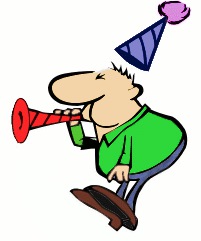 it is and isn’t. If you value creativity, perhaps you’ll pick up some new mode of expression be it writing or painting or learning an instrument. It isn’t about anything too specific, like learning the piano. It’s about exercising your creative expression when opportunity arises so it’s free to take many forms. If you value health, maybe you’ll cut back on sugar or try new superfoods.
it is and isn’t. If you value creativity, perhaps you’ll pick up some new mode of expression be it writing or painting or learning an instrument. It isn’t about anything too specific, like learning the piano. It’s about exercising your creative expression when opportunity arises so it’s free to take many forms. If you value health, maybe you’ll cut back on sugar or try new superfoods.
The important thing in step three is to keep things as “resolution free” as possible. This isn’t about reaching an end goal. You may or may not, for example, cut out sugar, but I guarantee you, will, by the end of year, be astounded at how whatever you value has come into your life in unexpected ways. You’ll be more forgiving. You’ll be more creative. You’ll be more adaptable or wise or joyous.
If you find yourself writing a list of things that sound more like resolutions, try this. Make a list of things you’ll spend less time doing and more time doing:
I will spend less time griping about what I can’t control and more time letting things roll of my back.
I will spend less time zoning out on social media and more time actually socializing.
STEP FOUR: Put it away.
That’s right. Unlike a resolution that you think about constantly and use to feel rotten, don’t think about your list. Yes, the words will be in your awareness, but you don’t have to take any action. Trust life to fulfil your order and take notice when it does!
Oh, and feel free to edit at intervals throughout the year. After all, things change. Go with the flow!
STEP FIVE: End of Year Review
Come November or December, it is time to revisit what you wrote. Reflect month by month all the ways your values were expressed (or not) throughout the year. There’s no failure here. Everything is a gift, a lesson. If you just couldn’t forgive someone, you’ll now have a better understanding of how aligned you are with your values and the work that still needs to be done, if any. But more likely, you’ll be astonished at all the ways you allowed forgiveness, or whatever you value, into your life.
Most importantly, instead of berating yourself for failing to “improve” yourself by reaching some unattainable goal that you never really wanted to reach in the first place, you can feel good about living a year living in the direction of what you value. #HappyNewYear!

Throughout history, everything that lives has undergone evolutionary change over time and what have appeared to be significant growth spurts on occasion. With the human, these periods have been post-marked with the ushering in of stages such as The Great Enlightenment or The Industrial Age. We now find ourselves in The Information Age, but despite being inundated with knowledge, believe it or not, there are still plenty of things we don’t know…about ourselves, the natural world, and the Universe at large. The worst part about all this information is that it gives us the illusion we know it all. So when we find ourselves experiencing the inexplicable or inconceivable, we try to fit it into our existing framework and fail miserably. Or worse, we deny what is taking place, shutting our eyes to opportunity and growth.

Photo by Stuart Davies
Right now, I have a string of clients all complaining of some of the same things, which I’ll get to in a moment. I’ve no doubt that many of you reading will discover that you are experiencing some of the same symptoms for which my clients sought me out. They thought that something was desperately wrong with them. They feared they are losing their minds. What I am about to explain I hope will put you at ease and give you a new frame of reference through which to view what you too may be experiencing. I will attempt to keep it as simple, clear, and free from unnecessary jargon as possible.
You see, we are on the cusp of one of some pretty big evolutionary growth spurts!
This article will be merely an introduction to the symptoms affecting a greater and greater portion of humanity. The special thing about these symptoms is that your doctor will find no conceivable explanation for you having them. He’ll either tell you they are psychosomatic or want to push some pill on you to make you quiet and happy. You can decide for yourself what to believe about this list and how it might apply to you, but make no mistake: if you (or someone you know) are experiencing these, you are not alone.
But first, let me explain that we are vibratory beings. By that, I mean that if we could see at the atomic level, we’d discover we are primarily space and that the atoms that “form us” are in constant, jostling motion. We are also highly sensitive to other vibrations or energy…music can alter our moods, foods can cause allergies, winter can darken our mood. Many other subtler energies also affect us constantly.
In fact, jus as we are outwardly affected by changes in weather, enjoying a sunny day or dealing with the catastrophic results of a hurricane, we can also be inwardly affected by another type of weather we can refer to as Human Weather. You’ve probably heard about the idea that “we’re all one,” whether or not you believe it to be true. It doesn’t matter, really, if it fits your current belief system or not. It is perhaps more accurate to say that we are all connected. In other words, when mass amounts of people are being slaughtered in the name of religion, we all feel it on some level. When mass amounts of people are afraid or hungry or destitute, we feel that too. And when our brothers and sisters turn against one another in racial hatred, that hatred affects us all with a deep and irreconcilable sickness of spirit. Have I gone too far? I hope not. Stay with me.
There is another type of weather, a Universal weather signified by planetary changes including those of the sun. These too have an affect on the sensitive instruments we are. Make no mistake. There are many changes going on, from climate to pole shifts to solar flares. These all have an impact on the human form from our physical bodies to our emotional and mental bodies, even our spiritual selves.
So, if you are suddenly experiencing any of the following symptoms for the first time in your life or for the first time in a long time or perhaps on a more regular basis (in other words, it is out of the ordinary for YOU) , take heart. You are not necessarily “sick” in the traditional sense and you are definitely not losing your mind. Your body and mind is either reacting to the various weather patterns out there or you are experiencing very deep level changes that will resolve with time, not with pills or addictive substances!
Diet
You may be experiencing rather unexpected dietary changes, from being sensitive to certain foods all of the sudden to having strong cravings for others. You might be eating far more or far less. You might be experiencing weeks of nausea or you might be eating all day long while still feeling hungry. You may not want to eat at meal times, but rather at very unusual times. Many report changes in the body’s ability to digest either certain foods or even everything one eats. Life long vegetarians, for example, may have to eat some meat. Life-long meat eaters suddenly can’t look at meat anymore. Some report (myself included) that food no longer tastes the same. You may have sudden weight gain or loss that cannot be attributed to diet. Again, what’s important here is how it is presenting itself for you…that it is out of your ordinary.
Sleep Patterns & Energy Levels
Many people are experiencing waking between the hours of 2 and 4 AM. Others are having all out insomnia while others need more and more sleep or naps during the day. You may have spent your life happy with 8 hours of sleep, and then, suddenly, 10 hours is never enough. Or exhaustion comes on so suddenly, you have no choice but to drop wherever you are. You might find yourself on a three night streak of creativity that can’t be ignored, keeping you up. Or you might feel the need to do nothing but sit around all day long watching total fluff. Motivation will seem to have disappeared overnight even on a project that you were excited about just a day ago. If you roll with it, these periods will pass on their own, but if you stress over the changes, you’ll find them a source of anxiety and worry.
Emotions
Emotions can run hot and high. Things that ordinarily you could control are inciting you (or your loved ones) to react in uncharacteristic ways. You may find yourself crying right there at work in the middle of the day or laughing out loud for absolutely no good reason. You might be quick to impatience, irritation or anger…or even bouts of spontaneous joy, wondering “where that ” just came from.
Thought Patterns
You may find that your thoughts seem excessive. You may be hearing yourself think more and more. These thoughts can be odd, as if the thoughts of someone else entirely, or they can be disturbingly dark. The mind can race and put a negative spin on everything provoking other symptoms such as anxiety or depression. Or, if you’re one of the lucky ones, maybe you are finding things very quiet in there for the first time. This may or may not be disconcerting depending on your interpretation of it.
Relationships
Perhaps how you relate to others is changing. Maybe you suddenly don’t really relate anymore to a lifelong best bud. Or maybe you find yourself looking at a stranger when sitting across from your beloved. You might even see a stranger looking back at you in the mirror. Let friends fall away. New ones will come. Let toxic patterns fade. They will be replaced with more functional patterns. You may find yourself not wanting to hang out with people at all, even if that feels lonely. Or, you might be a life-long introvert who suddenly can’t stand being alone. You might feel sadly disconnected from everyone and everything, and this too can be disconcerting. With this often comes a longing to connect to your true tribe.
Life Changes
Lives are changing in more and more dramatic ways and within quicker timelines. Circumstances outside our control step in in order to shuffle us around. Jobs are lost, evictions take place, relationships crumble, money troubles challenge. Yes, of course this is always happening to everyone anyway. So I’m talking here about extraordinary changes…multiple changes in multiple areas. I’m talking about challenges to one’s sense of safety, identity, and place in the world. These changes often provoke deep questions such as “Why am I here?” or “What do I really want?” You may be in a period of having no answers and this can cause great inner turmoil. Stay with it. These changes are meant to open new doors and new possibilities more fitting to your truth and path.
Memory Loss, Confusion and Spacey-ness
Not being able to remember simple things like a deeply ingrained password can cause concern, especially if it happens out of the blue. Some days, it may be hard to think straight at all. The head is in the clouds, and sorting through even a run-of-the-mill problem is just too much to take even if normally you’re king or queen of detail. It might be harder to make decisions or know which path to take. This generally passes in a few days or even after a couple of weeks…sometimes leading to intense periods of productivity and creativity.
Changing Dreamscapes
You might be having some very troubling dreams as of late, perhaps a streak of nightmares. Maybe your dreams are more colorful or full of images and characters you barely recognize, as if you are dreaming someone else’s dreams. You may be more lucid or have intensely beautiful dreams, too. Or you might be experiencing some unusual activity before falling asleep…hearing voices or seeing images that are more than dreamlike and more akin to messages from somewhere.
Suicidal Rumination
The most important thing about this symptom is that the person having them generally knows they wouldn’t actually act on them. They just happen. This is perhaps one of the most disconcerting symptoms for many people. All I can say is, you’re not alone and you’re not losing it. Something is definitely affecting the weather! Try not to take it too personally when you find yourself fantasizing or planning a quick exit. Detach from the thoughts, as best you can. Shake them off in each moment you have them. If they return, don’t pick them up. If you fear you’ll act or these thoughts are very convincing, then you need to seek the appropriate help. We don’t want to lose you!
Other Oddities: Out of Time/Space, Out of Sorts
You might find that on certain days you wake up, turn around, and find it’s time for bed already. You might have the weird sensation of timelines merging or alternate realities tugging at your sense of the real…as if you’re dreaming all day long. You might just find yourself in a grand funk…unable to put your finger on why you just can’t seem to function at all in any way, shape, or form. Strange synchronicities may occur also, things you just can’t ignore.
Depression/Anxiety/Loneliness
These are perhaps the most obvious and therefore the most common symptoms being reported. Is one out of every three people really depressed? And if those statistics are true, then maybe depression is a normal part of life and not some kind of mental illness! Regardless, if you are feeling depressed for the first time in your life or having panic attacks and anxious feelings for no apparent reason, it doesn’t mean there’s something you need to be medicated for. You may just need to learn to be with these feelings as they pass through you. They may be asking you to look deeper. Seek help if you need it. Take medication if you think it will help, but realize that you can’t get away from the root causes of these feelings until you actually face them and deal with them.
And now for some of the more physical Symptoms:
Headache
Frequent, intense, and constant headaches might occur, as may visual phenomena like seeing colored lights or flashes. Pressure or soreness around the bones of the skull can also occur. Again, this can signify something more tangible, so follow your instinct and get checked out by a doctor if you want. But when he tells you he can’t find any possible reason for it, that you’re 100% healthy, and that it is all in your head (no pun intended), don’t let that shake you. You’re going to be okay. What’s happening runs deeper than anything any doctor could ever diagnose. It’s all part of a bigger change taking place.
Flu-like Symptoms Including Muscle Aches & Joint Sensations
Many people report what they lovingly call “ascension flu”. They don’t really have the flu, but they are experiencing all the symptoms of the flu from feeling terribly run down with no appetite to even having a bit of a fever. The muscle aches and joint pain associated with flu are also present, and of course, these can appear on their own as well. The thing that lets you know something unusual is taking place is how unusual the symptoms tend to be and with no apparent cause. It’s just an all-over malaise, though it can also be as specific as a bizarre sensation in the left elbow or right tip of the little toe where something is stored in the body and being worked out.
Chills & Sweats
Temperature sensitivities are common as many report either waves of chills or sweats, either all over or centered in one specific part of the body.
Heart Palpitations
Is your heart racing madly for no apparent reason? This is also a commonly reported symptom. I’ve been sure I was having a heart-attack numerous times, but I never was. Was is stress? Chalk it up to whatever you want, there are days when something might play with your heart rhythm leaving you feeling panicked or thinking you need a heart specialist. Don’t be surprised when the heart specialist tells you everything checks out hunky-dory. While that brings a sigh of relief in the moment, when the symptoms returns, that relief quickly fades. It helps to know others are experiencing inexplicable changes in the heart center as well.
Dizziness
Finding it hard to walk a straight line? Join the club! There may be days when you are suddenly having to catch yourself from toppling. Some people even have to spend the day in bed until this feeling subsides. What is it? Who knows? Changes in gravitational pull?
Sensory Perception Sensitivity
Many are reporting tinnitus-like symptoms of high frequency buzzing in the ears. I used to get a flapping wing sensation in both ears. Increased sensitivity to noise is also common. Even what is usually pleasing music can be too much as a deep need for silence takes over. Are your eyes wigging out? Going blurry? Seeing things like flashes of light in dark corners? Sensitivity to light can also occur. In fact, any of the senses can experience shifts…from taste as discussed in diet, to touch with people reporting strange strokes or pricks upon the skin, to smell and the sudden perception of inexplicable odors.
This is by no means a complete inventory of the bizarre symptoms affecting a wide range of people. What makes these symptoms unusual is that they cannot be linked to any physical manifestations of illness. They are inexplicable, at least according to traditional paradigms. They often pass or shift on their own fairly quickly. But if one isn’t aware that this is happening on a global scale, if one starts to think something is wrong, the problems can intensify with the resistance and fear. Then when a doctor says, “It’s all in your head,” (or worse, shrugs and writes an unnecessary prescription) you think you’re going nuts. I assure you, you’re not. You’re in good company. We are changing. Our bodies are purging lifetimes of antiquated traumas, beliefs structures, and stagnation.
Finding ways to deal with these symptoms is beyond the scope of this article, but there are plenty of healthy ways to do so, from taking on a regular exercise program, to getting plenty of rest, to drinking more water, and taking up a meditation practice, to name a few. But if you are experiencing them, you are urged to take any necessary steps to support yourself. There will be those who resist and they will have the worse time of it. Embrace and lean into what is happening. Trust it. Trust yourself. Turn to those who have an understanding of what is happening and who can offer you tools to cope. The times, they are a changing, and there’s nothing you can do to stop it. The only other option is to be left behind.

For a long time, the question, “What do you want?” would fill me with angst. I never knew what to answer. I always had a sense that if I did, I would be forever limiting myself and excluding something important. In a way, that was true because my perspective itself was limited to things I wanted to be, achieve, do or have.

Photo by Stuart Davies Used with Permission
Now I realize it never was meant to be a trick question. I just needed a broader perspective.
I’ve been asking myself the “what do you want” question a lot lately. What do I really want? And the answer is so simple, it’s astonishing. I want three things. With these three things, I’m assured a happy life. What are they?
Peace
I want to be peaceful. What does that mean? What does peace look like? Firstly, it requires acceptance of what is. I can’t be fighting against reality and wanting things to be other than how they are. I have to learn to be with what is, no matter what. It doesn’t mean I can’t take action to change something, but I have to let go of expectations and outcomes. Secondly, it means I have to cultivate peacefulness inside myself. I cannot afford to harbor ill-will toward another. If I do, I will lose the thing I most want out of life. I have to be willing to choose peace over being right or justified. I have to choose peace over thoughts that would instead bring me disharmony.
Joy
I want joy in my life. To be joyful, I have to appreciate life. Luckily, there’s so much to appreciate: color, fresh air, sunlight, flowers, trees, clouds, rain, animals, art… I also have to allow myself to create and be spontaneous. There’s no room for inhibition in joy. Joy is a natural spring that must be allowed to bubble up and express itself. There’s no room for holding back in fear. Joy is exhuberance. It’s playfulness. It’s willingness. Joy opens itself up to life and says, “Yes!” Joy if full of gratitude and generosity. Joy tries new things and isn’t afraid of being a little silly.
Love
I want to live a loving life. I want to be more loving toward not only others but myself. What does that mean? It means I have to be willing to feel all of my feelings. It means I have to respect others for who they are. It means I have to exercise forgiveness on a daily basis. To be move loving, I have to remove all the barriers I’ve built up to love. It means I have to reexamine my beliefs about love. It means I have to be vulnerable and gentle when I want to protect and defend. Love is compassionate and open. There is room for everyone and everything. Love even has room for fear, but love has the wisdom to know that fear has no real power.
This is all I want out of life. With these three things, I have everything. So, it doesn’t matter how they arrive or what they look like. Whatever manifests, and regardless of what doesn’t, I’d have it all.

I’ve been on a quest since the beginning to aptly name my work. I’m still searching for the right words to describe what Transformational Voicework is…and isn’t. It’s one of those “you have to experience it” experiences. Finding the right words to explain what must be experienced to be known is and will probably always be impossible. But I keep trying! I even wrote two books about it.
It has always been challenging describing and defining my work. Use the word “voice” and people think of standing in front of a room shaking or standing in the back of a choir shrinking, and worse yet, screaming…as if that’s all the voice had to offer us. They think of words and lyrics, yells and squeals.
At first, I called my work Shamanic Voicework because the practices developed out of my experiences with Toltec shamanism and the exercise known as recapitulation. Forget the fact that it also combined elements of Creative Drama. After all, I couldn’t very well call it Shamanic Creative Drama Voicework! But the word “shamanic” was a trigger for a lot of people while others just felt is was too woo-woo, so I changed the descriptor to “transformational” since when people engaged in this work, that’s what was happening. They were transforming. They were losing inhibitions and tapping into buried creativity and expression. But while this describes the result, it doesn’t really explain the purpose or process.
THE PURPOSE AND PROCESS
The voice is a powerful tool for healing, but few people think about the potential of the voice beyond speaking and singing. They take the voice for granted instead of realizing the incredible magic if offers. But I couldn’t very well call it “healing voice” or use more technical types of words because there were already too many associations with speech therapy, another common mistaken association. And I couldn’t call it “voice yoga” because my friend Kara nabbed that one! 😉 But actually, even that didn’t quite reach the heart of the method I’d created. For years, I’ve been making due with Transformational Voicework.
But now that I’ve left a city where every other person is a yoga teacher or massage therapist to live in a country where few people even know what Reiki is, let alone something called Transformational Voicework, I’ve had to rethink things again. I’ve had quite the brainstorming session, and words like “metamorphosis”, “catharsis”, “unwinding”, and “opening” came up. So did “evolution”, “revolution”, “rapture”, “genesis”, “deconditioning”, “purification”, and “reprogramming”. But some of these are already in use in a different way. For example, there are musical artists that call themselves “Vocal Revolution”. Besides, some of these words are no less “woo-woo” that “shamanic”.
Other words came to mind, like “primal”, “divine”, “sovereign”, “instinctual”, and “reflexive” …along with plenty of silly phrases like “Voice Hurling” and “Vocal Roto Rooter”…along with nutty mash-ups like Evocalvox. There were also words like “authentic”, “pure”, “satisfying”, “archetypal”, and “heartfelt”. “Imaginative”, “creative”, “uninhibited”, “liberating”, “adventurous”, “natural”; each of these words plays such an important role in the type of voice work I share with clients. But how do I get that across in three words or less? So many words, each of them saying something important about the techniques I offer, but no one able to encapsulate the energy-moving, life-altering processes.
While I thought I was onto something with the word”release”, a major aspect of the work that has to come first to get to the juicier parts, it too presented problems. Short and sweet, but associated with screaming, it was perhaps too easily misinterpreted. Alas, “Vocal Release” is already in use to describe a singing method anyway.
Another word I really like is “intuitive”. The head has to be removed or the sounding isn’t natural and indigenous to the body; it is still far too conditioned. The voice (or the mind that controls it) requires deconditioning. But while I would be referring to mental deconditioning, voice therapists already use the term to describe degenerative states of the vocal mechanism, and I certainly don’t want that connotation! I love the word “intuition” which reflects that the sounding isn’t about following a sheet of music or trying to sound a certain way. But using “intuitive voice” alone connotes channelers and psychics.
I recently came up with “Intuitive Vocal Release” and tested it with a small audience. The usual connotations arose: singing, screaming, shouting. Some people thought it was downright wordy and empty. Granted, they have nothing experiential with which to relate it…nothing but singing, screaming, or speaking. The usual. But that’s not what I teach. Transformational Voicework is a series of processes that take a great deal of coordination with attention on very subtle changes, utilizing breath, movement and the full palette of the voice to move emotion, energy, stagnation and pain. Tranformational Voicework is a way in and a doorway out.
AND SO…
Transformational Voicework will have to stand for now. Regrettably, I am aware that misunderstandings of my work continue. Most clients who show up for the first time at workshops tell me, “I have no idea what this is. I just know I have to try it.” Such brave souls and always ready for the experience. With others, for example random people who ask me what I do, there are always assumptions more so because there are no concepts other than singing or speaking with which people can relate. Sometime, I just give in exasperated, “I’m a vocal coach.” At least they can wrap their heads around it. Someone suggested the word “experimental” and while it requires a sense of exploration for the person going through it, I don’t like the connotation that there is no method to the madness. I know where it all leads…to the “exalted voice”…something I’ve seen and been blown away by time and again in my clients who are fortunate enough to allow themselves to go that far.
I’ve been trying to label all of this, to develop a phrase that narrows in on the most essential elements of this amazing work, but maybe it is the heart alone and not a name that needs to call people to this path. I’m okay with that.
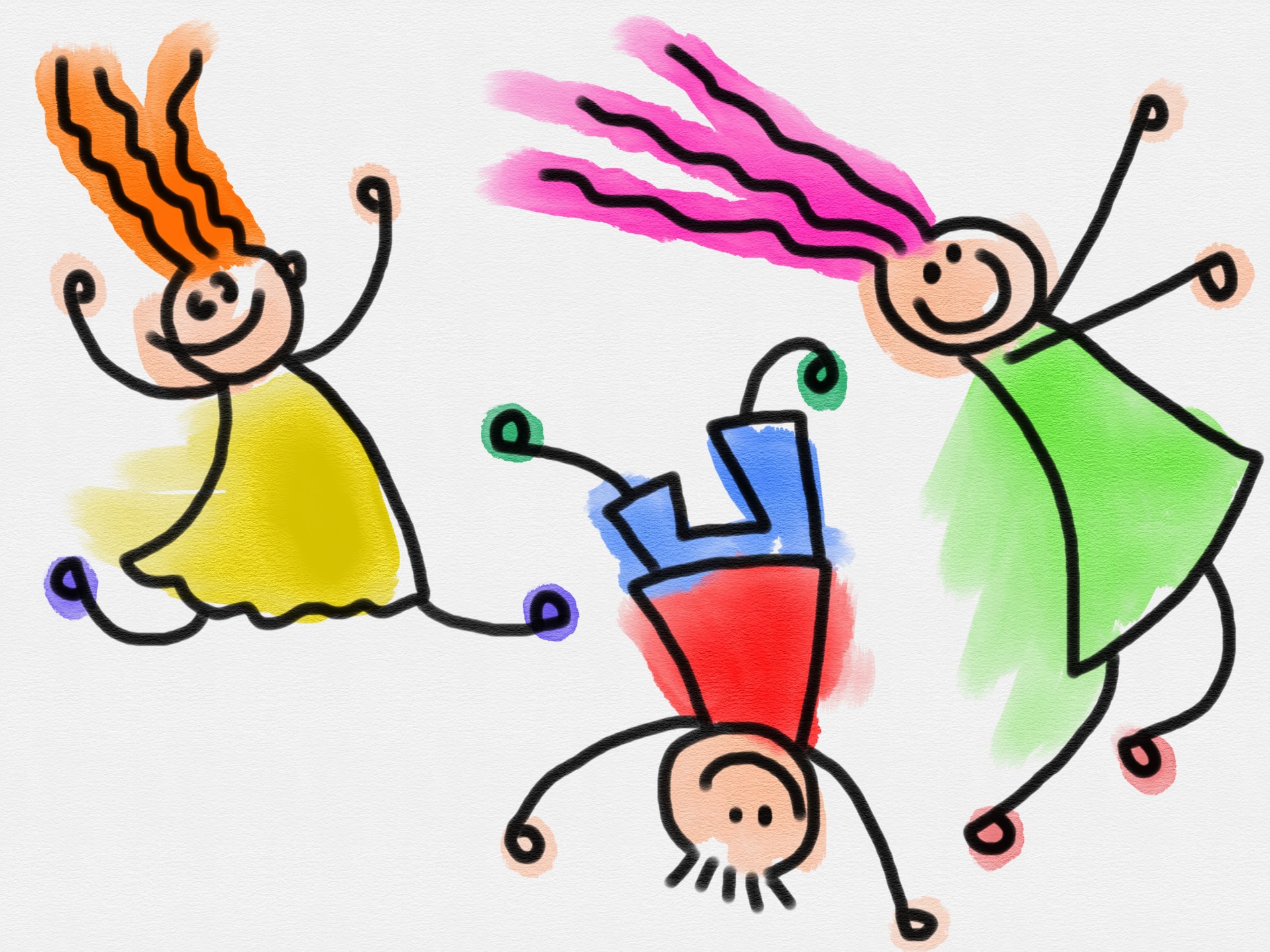
I had a dream not that long ago. I was with a group of children rolling around and playing. We were laughing and having such a silly time of it. When it was time for me to go, I felt I had to say something. I told them all how much I appreciated playing like that again and watching them too and that I had no doubt of the importance of allowing ourselves to play. I encouraged them to keep playing, keep laughing, keep having unbridled fun for as long as they could in life, for these things could save the world.
This dream sort of came true for me recently when I taught a group of expat kids a creative drama workshop. It was a joyous day for me because the kids were so uninhibited and alive. Their eyes still shone with the light of their hearts. They weren’t afraid to act silly, take a chance, or imagine something that wasn’t real. They gave me hope…and fits of laughter.
I’ve never thought myself all that unusual, but the more I engage with random folk and not just friends, the more I see myself as an oddity. So many “grown ups” seem so happy to argue for their limitations believing they can’t do this or that, that they are too old, too tired, too inflexible, and too late. They are terrified of making a fool of themselves, to try something new. What an excruciating way to live! If there’s something you love and you want to do it, go after it. You might not be the next Picasso or Barbara Streisand, but so what? You might never sell your book and perhaps no one will ever hear your song, but if it is inside of you, for heaven’s sake, let it out! Who cares who’s watching? Who cares who’s judging?
I think we have “growing up” all wrong. For so many people, the act of growing up stole their essence. They exchanged wonder for skepticism and their favorite toy for their favorite addiction, numbing themselves to the pain of a joyless life. Growing up isn’t meant to be growing away from ourselves. Growing up is growing away from and beyond all the bullshit we’ve been taught to believe. Growing up is remembering how to be childlike without being childish. Growing up is a remembering, not a leaving things behind. Only then are we truly alive and wonder-full, a creative force to be reckoned with. Go play!

 I recently came across a fascinating article about how different types of meditation affect the brain differently written by
I recently came across a fascinating article about how different types of meditation affect the brain differently written by
The article distinguishes two main types of meditation: directive and nondirective. For the sake of clarity here, directive meditation requires a focusing of the mind on something whether it be one’s breath, an object, or a thought. Nondirective meditation, on the other hand, allows the mind to rest or wander freely. In other words, there is very little effort mental exerted.
The research discovered that those in the study practicing nondirective meditation actually had more neural activity than the directive group.
Nondirective meditation led to higher activity than during rest in the part of the brain dedicated to processing self-related thoughts and feelings. When test subjects performed concentrative meditation, the activity in this part of the brain was almost the same as when they were just resting.
These results suggest that nondirective meditation is more helpful when it comes to processing our thoughts and feelings. If the whole point of one’s meditating is to “know thyself”, then it is clear which form of meditation would be more beneficial.
Last night, my meditation group worked with a Gyatri Mantra meditation, listening to a drone and powerful chanting created by one of my favorite online resources for chants, Dr. Nipun Aggarwal. Afterwords, one of my fellow meditators wanted to know whether what we had just done was the first type, directive, or second type, nondirective type of meditation.
I realized that it wasn’t so much the technique as it was the meditator that would determine which “type” of meditation was experienced. This woman expressed that she was mentally focused on counting the lines of the mantra and so felt as though it was a directive meditation. I, though, had had a nondirective experience allowing the sounds of the mantra to simply wash over me. Thoughts came and went. I do remember at one point turning my attention toward the practice of circulating energies of the Microcosmic Orbit, so there was for several minutes, a more directive experience for me as well.
This all has me asking more questions. Is is possible that these two forms of meditation, or what are classed and treated as two distinct forms of meditation, are really only one form of meditation experienced at different levels of ability? Is the goal, in other words, always nondirective meditation? Assuming the person meditating is doing it to “wake up” to the self, then wouldn’t nondirective meditation be a higher form of meditation than anything directive? In fact, what are the benefits of a more directive form of meditation if such a form doesn’t help us process our thoughts and feelings? It is merely reduced then to a form of relaxation or exercise for the mind?
I recently shared a post on Facebook how meditation is a growing trend. I commented that I was happy to see more and more people learning to meditate but not at all happy it was “trendy”. One of my friends asked me why: More people are exposed to it with greater benefit; what’s bad about that?
At the time, I didn’t much feel like trying to explain how when things go trendy, especially spiritual things, they also get watered-down and greatly misunderstood. It happened with yoga, and now, while there are of course those who do understand, many turn to yoga as a mere physical challenge, completely and ironically ignoring the body in the process. It is likely to happen with meditation as well. If people do not understand the differences between directive and nondirective meditation, there is a grave danger in masses of people thinking they are meditating when all they are actually doing is concentrating and bending the mind to will. Worse yet, there will be those who take The Mystery out of meditation completely sterilizing it in the process. I’m not saying just because it is trendy that people won’t benefit from meditation. That didn’t even cross my mind (until someone I know explained that’s how they read this). I just want everyone to have a chance to experience the best that any meditation has to offer.
Setting aside the “trend” debate, everything has its place. We all have to start somewhere, and often, directive forms of meditation are the easiest. It’s where I started. I suspect it’s where most of us start. I’m not claiming to know that nondirective meditation is somehow superior to directive forms, either. I’m merely asking the questions and sensing what has been true for me. I love many different forms of meditation, including directive. But I must say, for me, the most transformative of experiences have been resting in the wide (and wise) open space of the self, being still but observant, free from efforting, concentrating, and controlling anything. It took a nondirective practice for me to experience that.

 “You won’t believe what happened to me this morning. My life is forever changed. I was eating crackers waiting impatiently for the completion of a download on a 56K modem. I broke a cracker with my thumb for more manageable eating, and the cracker broke into the peace sign. Sure, I know what you’re thinking…so what? I didn’t think much of it either until I broke a second cracker into the exact same configuration. Then I had no doubt. It was a miracle…a sign to pay attention. And now I can find peace in anything!”
“You won’t believe what happened to me this morning. My life is forever changed. I was eating crackers waiting impatiently for the completion of a download on a 56K modem. I broke a cracker with my thumb for more manageable eating, and the cracker broke into the peace sign. Sure, I know what you’re thinking…so what? I didn’t think much of it either until I broke a second cracker into the exact same configuration. Then I had no doubt. It was a miracle…a sign to pay attention. And now I can find peace in anything!”
We all tell ourselves stories. Things happen, people say things, we have experiences, and we interpret and place meaning and value on all of it. We decide whether it is good or bad, important or meaningless, providence or coincidence. We choose. The trouble is, we are so invested in our interpretations we forget that anyone else having the same experiences might tell an entirely different story. And without being attached to our own version, we might find theirs just as valid. We forget that we too can tell a different story, see things in a completely different way.
Instead, we limit ourselves and others with our stories. We cast ourselves as victims or heroes or villains or victors, and we forget that we are just telling ourselves stories. We identify so deeply with the stories we tell ourselves we tend to believe in them whether they serve us or not. Sure, we all have great stories about how we finally got what we worked so hard for or finally spoke up for ourselves. Those stories feel good. But so often, we write like the soap opera writers, with such drama and tragedy! Or in writing a story of great self-importance, we end up defeated, afraid, and confused when things don’t turn out like we expected. And then we tell another story to explain why. So at times like these, it is best to remember, we are just making things up as we go along!
We interpret the signs, the words, the expressions, the events that happen to us. And those interpretations in turn influence the stories that come later. So it’s important to be aware of the stories we tell and to remember it’s all in our heads, no matter how we choose to see things. And we have so many choices! One person may see the shape of a broken cracker as a sign from God and be so inspired that he starts a program to feed the hungry in his neighborhood. Another person could see that same cracker and think of the irony of such a symbol in a time of war, getting lost in the despair of death and destruction. Still another person might have been so distracted that she didn’t even notice the pattern…but had she been paying attention, what story would she have made up for herself?
My cracker incident got me thinking about what kind of storyteller I am. Do my stories serve me or limit me? What kinds of stories do I want to tell? I clearly have a choice. I can shrink myself and my world with my stories or I can inspire and encourage myself and others. I’ve decided I want to tell beautiful and empowering stories. If I can find peace in a cracker, with mindful storytelling, I can find peace in anything.
Incidently, when I ate my third cracker, it didn’t break into the peace sign. I guess it only had to happen twice for me to write this story.

Many years ago, about this same time of year, I spent a weekend at a women’s workshop at the Garden of the Goddess, a retreat ranch outside of Santa Fe. What I learned about myself came as a bit of a surprise because it seemed like an “insignificant belief” but it actually had very far-reaching effects. I believed that if anyone ever gave me support or helped me in any way, I felt beholding to them disproportionately. This is a simple belief and one easily rationalized away by my intellect. But wait ‘til you see what it had been doing to my decision-making.
First, to explain the belief. I will use a real-life example that incidentally happened the week before the workshop. At work, I asked the technical director to cut some thin lumber to cover the shelves of an organizing unit since the slotted construction of the shelves made them fairly useless. She did so. And afterwards, taking the sheets of wood under my arm, I asked, “What can I bake you?” For some reason, I felt like I owed her a personal favor in return for the favor she did me in cutting the wood. The ironic thing is that she didn’t really do me a favor at all. She did a favor for the office…and then, is that even a favor? She is employed same as I to keep the company functional. But the problem for me does not really lie in the “was it a favor or not” question. I was grateful to her regardless. The problem lies in the fact that my feeling gratitude wasn’t enough. I had to do more, even taking personal time and going to expense to prove it.
It ultimately comes down to self worth. Had I had a sense of worth that said, “yes, I accept this person’s effort” or “I deserve this help that I am receiving”… Instead, my hidden belief was that I did not deserve what others were willing to do for me, and if I wasn’t careful in covering that up with lots of gifts and overzealous thanks, they would see that I was not worth it. Or even worse, everyone else would realize I’m worthless and therefore expect me to pay back big time if they did me a favor.
A joke was made at the workshop to help me bring this shadow into the light of absurdity: “Thanks for the foot massage; what kind of car can I buy you? Thanks for the Kleenex; would you like a new wardrobe?” My perceptions were not only that screwy but were accompanied by a bizarre sense of guilt that I could not respond.
Once I started to spend more thought on this one issue in my life, I became aware of so much more. For one thing, this belief ties in to both my parents. My father was always showing love by buying, feeding, forcing. Yet, he never really gave himself, his presence. I had inherited that trait. I didn’t see my presence, my love, as enough. I don’t blame my father in any way because after all, it has to be an ancient belief. We each simply inherited it like a gene. Had he known differently, he might have done differently. He might have realized his true worth, his self, was enough. On the flip side was my father’s belief that he was not appreciated, a belief frequently made apparent, hence, my warped perception of gratitude not being enough.
My mother on the other hand contributed to my perceptions because she was so sacrificial. She would give us kids anything…and not always with a smile but often with a martyred sigh. While other children may have interpreted this experience differently, I interpreted it as meaning that mothers have to give ‘til they are dry and always put others first’. I also perceived a huge void in my mother that I felt responsible to fill as her beloved daughter…an impossible task since no one outside of the self can ever fill a hole for us, hence the guilt for not being able to fulfill another’s needs.
Complicating my beliefs about payback and gratitude was another belief I discovered about asking for what I need. It was revealed to me in a dream I had a few nights before the weekend. It didn’t make sense until I had the rest of the pieces of the puzzle. I dreamed that my father had cut off his thumb. My sister was on the phone to my mother telling her, “You have to take him to the doctor now!” and my mother saying, “Oh, it’s not that bad.” I realize now that the dream was about my own inability to take my needs seriously. I have held a belief that I have to be more than uncomfortable, more than in pain, more than sick to seek assistance. It has often resulted in exercises of endurance.
Can you see how my fear of payback also influenced my ability (or inability) to ask for what I really need? And if I just waited until it was an emergency, then I wouldn’t have to worry about not being deserving enough.
With this awareness, I could then continue to see how these ingrained beliefs played out in my life behind my field of vision. I had more opportunities to take a different point of view about my worth and my responses to others, and started taking responsibility to meet my own needs whether that meant asking for help when I was afraid to do so or helping myself when I’d rather look outside of myself. A single thread unraveled a whole blanket of misperception.
The act of discovery, while often painful to approach, has the awesome ability to greatly lessen the power our beliefs have had over decisions and choices and greatly empowers us with a new awareness to make new choices. It’s magic…when we’re willing to do the work.

 If everything is a matter of perception, through what lens do I see the world? It is a question I have been asking myself lately and frequently, having read Emotional Alchemy by Tara Bennett-Goleman, a book which I very highly recommend. In it, she discusses the cognitive habits and beliefs we have that skew our perceptions of reality in all manner of self-fulfilling prophecies.
If everything is a matter of perception, through what lens do I see the world? It is a question I have been asking myself lately and frequently, having read Emotional Alchemy by Tara Bennett-Goleman, a book which I very highly recommend. In it, she discusses the cognitive habits and beliefs we have that skew our perceptions of reality in all manner of self-fulfilling prophecies.
Work gave me the perfect opportunity to observe exactly the dangers such habits can wreck on an otherwise happy life. One day, I received a phone call from a woman asking to speak to our accountant. I asked her who was calling for him, as I always do in order to announce the call, as is considered standard procedure. She became very irate without ever simply answering me and hung up. Several minutes later, we received a fax that said, “Tony, I can’t seem to get passed the person who answers the phone. Here’s the information you wanted.” It made me laugh because all she had to do was tell me who she was. But, she must have had some belief in place somewhere in her subconscious that morning that made it true for her that I was giving her a hard time, singling her out, making her unimportant. None of that could be further from the truth for me.
The incident made me wonder, how often do I react “as if” something is true making my life harder than it has to be? It saddens me to think of all the times I’ve taken something personally and then suffered emotionally over what was nothing at all. No wonder one of the four agreements is to not take anything personally. It reminds me of a song that Ella Fitzgerald sung, “we made up and then, quarreled again, all over nothing at all.”
That same day at work, I got a call from a woman who wanted to be added to our audition mailing list. She was upset that she hadn’t been getting mailings as she used to “get them all the time and someone must have removed” her from the list. I then asked for her birth year, again standard procedure. She answered and then asked why I needed to know. I explained that we use birth years to save costs on mailings that only apply to certain age groups. For instance, it would be a waste to mail audition notices to people over 30 if the show calls for children and young adult actors. She became furious admonishing me not to judge her without seeing her. There was no comforting her, and the call thankfully ended. When I ran her name in the computer, her name was still on the list. It turned out that she had moved; she just never updated her address.
It became so clear to me that she was seeing everything through the lens of deprivation. Her belief that she would be mistreated, forgotten, and unwanted is exactly what she set herself up to experience. She reacted to me as if that we already so. Ironically, I got another call a few minutes later from a woman asking to be added to the same list. When I hesitatingly asked her for her birth year, she too wanted to know why. I explained, and she responded, “Oh, that’s a really good idea!”
We all do it. We all look perceive through the lenses of our previous wounds and experiences. We set ourselves up to experience exactly what we most fear. Seeing things as they really are and taking responsibility for what we’ve created is a stepping stone to freedom. Now that I am becoming more aware of my ability to choose which lenses I use, why not rose-colored glasses?
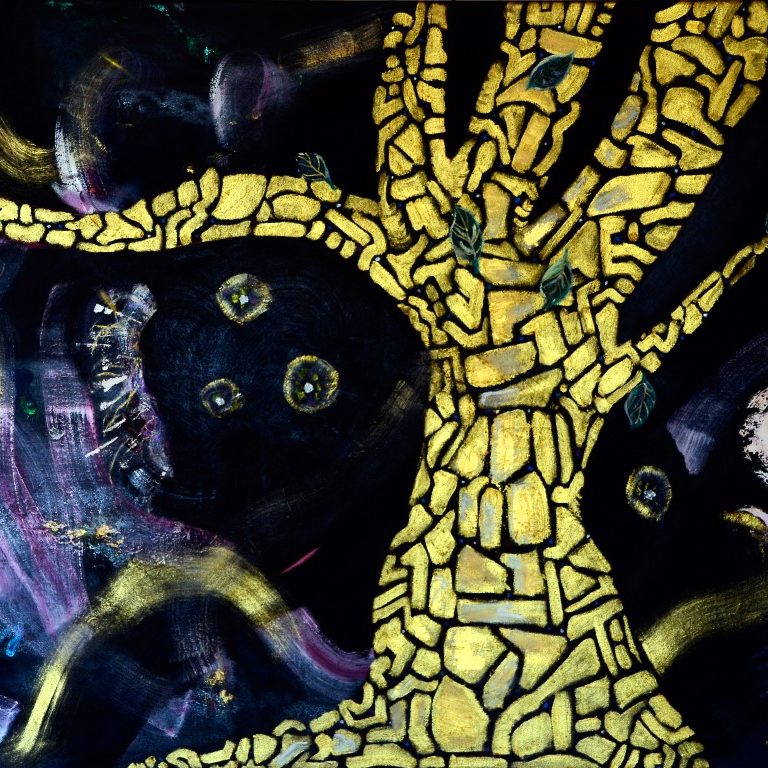
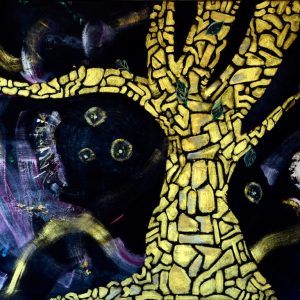 I recently read a great article, actually a compilation of quotes from various experts, on what makes art good. There were some very eloquent statements. One of my favorites was a quote from art critic #DeWittCheng:
I recently read a great article, actually a compilation of quotes from various experts, on what makes art good. There were some very eloquent statements. One of my favorites was a quote from art critic #DeWittCheng:
Good visual art looks stunningly right and, in retrospect, obvious, or inevitable– yet it’s also continually surprising. It is a powerful paradox. How can someone have possibly made this? How in the world could it not have been made?
And it all got me thinking. What makes art bad? The old saying goes, “beauty is in the eye of the beholder”. What one person finds dull or even ugly, another may find interesting or wonderful. So, what, exactly, are the parameters available to us for classifying art as “bad”? And is any art really “bad”?
For me, it depends upon two things: 1) why the art was created (in other words, the motivation and intention behind it) and 2) is it an authentic expression?
Let’s say someone who experienced a massive trauma, a refugee for example, started to express herself through painting. Maybe she was never trained and her technique is lacking. Yet, her reason for creating…to heal herself…that makes the work of art beautiful to me. That’s not to say I would want to buy it and hang it on my wall. But there is beauty in authentic expression. She had to paint it or a piece of herself would wither. Would a critic love her art? Maybe. Maybe not. But the ingredients are there for good art. Her reason for painting and the expression of that painting are genuine.
Do the rules change when we move into the professional art world? What if someone wakes up one day and decides, “I’m going to make money selling art.” He splashes some paint on a canvas until it appeals “interesting” to the masses and then slaps a price tag of $300 on it. Is the art beautiful? Or maybe there is a highly trained artist who follows all the formulas for a masterpiece. Is it a masterpiece? It may look like one. It may be priced like one. But is it? In the case of the former, the reason for painting lacks integrity and in the latter, the passion has given way to rules and techniques.
Or another example…a young artist tries very hard to copy the work of a master. It’s a learning exercise. It’s a little lop-sided or it might even be a brilliant copy, but is it art? How can it be? It’s a copy! The authenticity of expression is lacking. On the other hand, a child could draw a picture from his heart, and it could be the most beautiful thing in the world, simple in its innocence and devoid of technique, but a perfect expression.
So, maybe we can better determine whether art is good or bad by asking ourselves what the artist is trying to transmit. Are they just making a pretty picture? Or is there some meaning behind it? And do we resonate with that message?
From my perspective, bad art lacks heart. Good art is made from heart!
The thing is, everyone is artistic. It’s a god-given birthright to create whether it’s through painting, sculpture, writing, dancing, singing, knitting, cooking…whatever. So, who gets to be the professional, the acclaimed? Which of us are the talented master and stars of the game? Honestly, I don’t have an answer. I’ve known some amazing artists who never do a thing with it. And I’ve known some real “crap generators” who are making a living! It is an eternal mystery who is seen and unseen, who is chosen or looked over. A lot of it comes down to who has the balls to put himself out there!
For me, bad art is boring, ho hum, and lacks imagination. It’s what I’ve seen a million times before (and sometimes what I wished I’d never seen). Good art, then, is intriguing, inspiring, and something I’ve never seen before or, if I have, it’s done in such a way that it makes me pause and become curious. As I’ve said before elsewhere, good art makes me want to breathe more deeply. It stops time, if only for a moment, and says, “See how beautiful life is.” Ah, but now I’m back to talking about good art. We’ve come full circle.
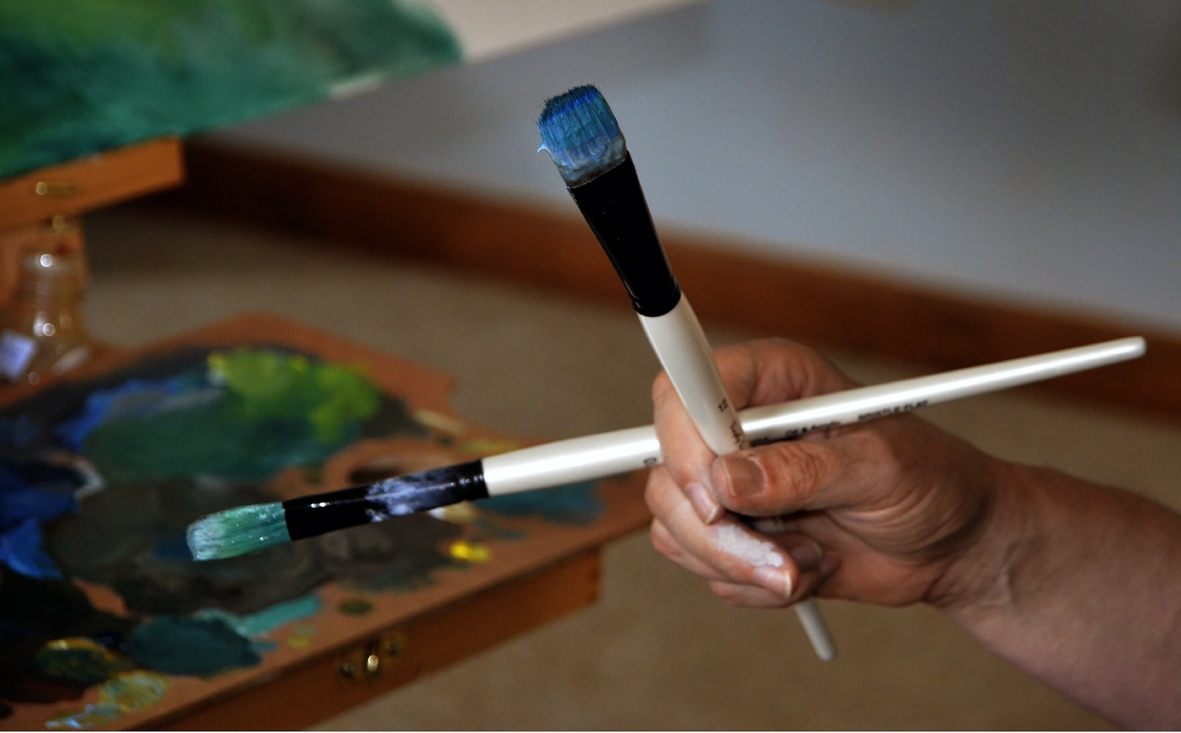
I just read another “end of the art world” article about the ramifications of artist as entrepreneur on the world of art. It seems something or someone is always trying to kill off the art world. Lots to think about!
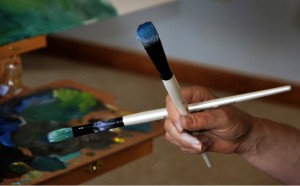 The article takes the position that the artist as master artisan is devolving as the wavy line that separates true artists from creatives gives way to the economic need, and that while once upon a time, artists were true craftsmen of rare and studied talent, today, everybody and his grannie can paint a picture or write a book and put it up for sale on Facebook. What was once genius, held sacred and protected, first devolved into a profession, as technique overtook inspiration. And now, that profession of art is morphing once again into the self-employed artist or creator, a jack of every trade necessary from accounting, to marketing, promotion, and sales, leaving precious little time for the great masterpiece. It’s a great article and a sad but realistic commentary on where we are headed. If Van Gogh has been alive today, he would have been just another interesting artist.
The article takes the position that the artist as master artisan is devolving as the wavy line that separates true artists from creatives gives way to the economic need, and that while once upon a time, artists were true craftsmen of rare and studied talent, today, everybody and his grannie can paint a picture or write a book and put it up for sale on Facebook. What was once genius, held sacred and protected, first devolved into a profession, as technique overtook inspiration. And now, that profession of art is morphing once again into the self-employed artist or creator, a jack of every trade necessary from accounting, to marketing, promotion, and sales, leaving precious little time for the great masterpiece. It’s a great article and a sad but realistic commentary on where we are headed. If Van Gogh has been alive today, he would have been just another interesting artist.
I am perhaps an example of the type of person to whom this article refers, as a writer, musician, and artist. But I didn’t “become” multitalented to fit into new markets. I do see more and more, though, that everyone is embracing their self-expression. Anyone can write a book, make a video, be an artist, write a song… Why not? I don’t know that everyone calling him or herself a writer, artist, musician, photographer, designer whatever is the end of art. On the contrary, I think humans were meant to express and create. We were meant to dream a more perfect world. No, that is not the problem.
The problem perhaps is that while we are embracing our creative natures, we aren’t changing the paradigms that rule society in terms of economy. We need an evolutionary leap. I’m not sure what that looks like. I’m not sure any of us do…yet. But I hope the possibilities make themselves apparent soon.

 Is ego killing the art world? I found a rather provocative article the other day written in 2014 by art critic #JJCharlesworth that spoke about ego in the art world destroying art. I’m afraid it didn’t convince me. If art isn’t about the self and our personal experience of the world, how can it be anything other than just a bunch of pretense and intellectualism? But then, I’ve probably just offended the pretentious Mr. Charlesworth. But that’s okay. I don’t invite him to my parties anyway.
Is ego killing the art world? I found a rather provocative article the other day written in 2014 by art critic #JJCharlesworth that spoke about ego in the art world destroying art. I’m afraid it didn’t convince me. If art isn’t about the self and our personal experience of the world, how can it be anything other than just a bunch of pretense and intellectualism? But then, I’ve probably just offended the pretentious Mr. Charlesworth. But that’s okay. I don’t invite him to my parties anyway.
As a friend and fellow artist said upon also reading this article, “I ask you this question: What is the difference between the #MileyCyrus work featured in this piece and one of the plethora of self portraits painted by #FridaKahlo or___(pick one)____?”
And that is exactly the point. If this kind of egocentricity has been killing the art world, it’s been doing so since 1433 when Jan Van Eyke painted his own portrait.
No, it is clear that Charlesworth, in writing about the ego-as-artist, was actually experiencing the ego-as-critic! His problem with individual self-expression doesn’t seem to include himself. Oh, the irony! Methinks his main objection to the rise of obsessive self-expression is that there are now more voices competing with his. Or maybe, maybe that he lacks the level of consciousness necessary to comprehend works like that of visionary artist, #MarinaAbramović. Could it be he sees it as superficial and self-obsessed because he himself is superficial and self-obsessed? It’s not a question he will want to explore, despite the fact that he believes art should make one think.
My paintings come from me and are symbols of the way I dream…I cannot separate them from myself. Nor do I want to paint or write about things of which I have no personal experience. I just don’t understand this critic’s argument in so many ways! And at the same time, I get it. I mean, who gives a crap about anybody else anymore, right? “Self-centered” can be a very bad thing or a very good thing; it rather depends upon the one defining it. As for me, I’d rather be centered in self than centered in someone else. That would just be weird…and painful.
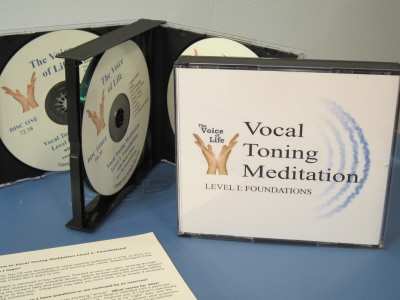
Resources
VIDEOS on Toning for Peace
There is a kind of aftershock that tends to hit me after a performance. Immediately following a show, I am quite naturally high as a kite and generally don’t hear a single thing anyone says to me. People may be shaking my hand, they may be congratulating me or sharing how much they enjoyed the show, but I am so far removed from my body, even the miraculously appropriate words that come from my own lips…”thank you”, “I’m so glad”, “so good to see you”…echo off the walls of my vacated self. I don’t know why this happens.
I have also tended to be hyper-agreeable. Give me an invitation or make a proposal for just about anything immediately following a show, and I’d shake my head enthusiastically that that would be lovely having no clue what I’ve just agreed to. Of course, I’m aware of that tendency now and so make it a point to say something like, “let me get back to you.”
I suppose this could all be because half of my brain immediately goes into “performance reflection” mode. Was it any good? Where did I mess up?” And in the worst of cases, “Why are these people being so nice when I clearly bombed?” I suppose it is a measure of my own insecurity how I must instantly assess how something went. I’d much rather hear constructive criticism after a show than a string of compliments of which I usually feel scarcely worthy. The criticism seems to ground me. I know what I can do better next time.
Performance Aftershock is not an enjoyable thing to go through…or at least is isn’t for me.
I developed the Principles of Sacred Performance to help myself overcome stagefright and the “aftershock” which for me was always worse than the stagefright.
“If you can become a mirror you have become a meditator. Meditation is nothing but skill in mirroring. And now, no word moves inside you so there is no distraction.”
Osho

